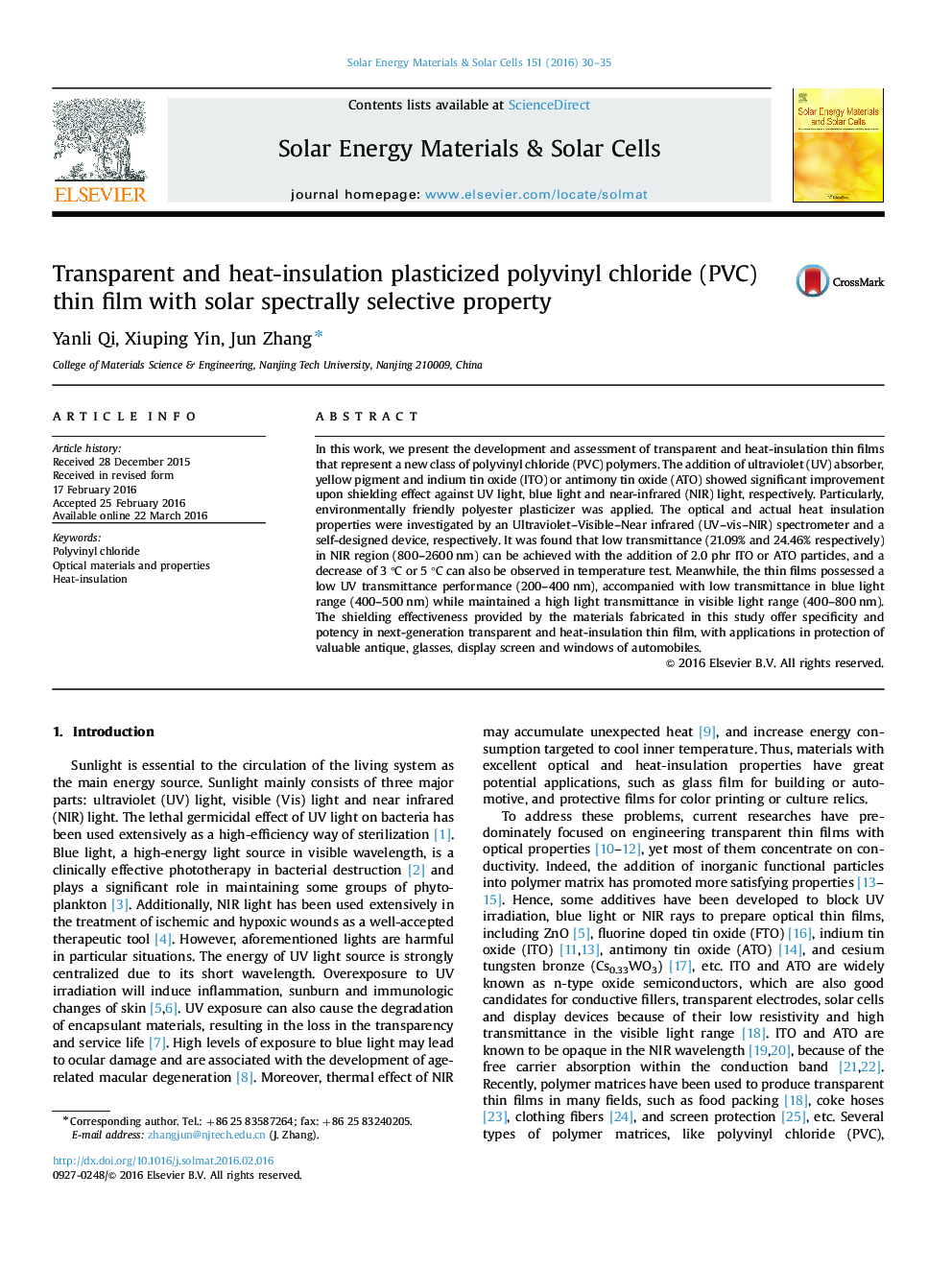| Article ID | Journal | Published Year | Pages | File Type |
|---|---|---|---|---|
| 77600 | Solar Energy Materials and Solar Cells | 2016 | 6 Pages |
•The addition of UV absorber and pigment yellow could block UV and blue light.•The films added with ITO or ATO perform efficient NIR-shielding property.•The films fabricated maintain a high light transmittance in visible light region.•The transparent films achieved perform excellent heat-insulation property.•The plasticized PVC films are reinforced by ITO or ATO to some extent.
In this work, we present the development and assessment of transparent and heat-insulation thin films that represent a new class of polyvinyl chloride (PVC) polymers. The addition of ultraviolet (UV) absorber, yellow pigment and indium tin oxide (ITO) or antimony tin oxide (ATO) showed significant improvement upon shielding effect against UV light, blue light and near-infrared (NIR) light, respectively. Particularly, environmentally friendly polyester plasticizer was applied. The optical and actual heat insulation properties were investigated by an Ultraviolet–Visible–Near infrared (UV–vis–NIR) spectrometer and a self-designed device, respectively. It was found that low transmittance (21.09% and 24.46% respectively) in NIR region (800–2600 nm) can be achieved with the addition of 2.0 phr ITO or ATO particles, and a decrease of 3 °C or 5 °C can also be observed in temperature test. Meanwhile, the thin films possessed a low UV transmittance performance (200–400 nm), accompanied with low transmittance in blue light range (400–500 nm) while maintained a high light transmittance in visible light range (400–800 nm). The shielding effectiveness provided by the materials fabricated in this study offer specificity and potency in next-generation transparent and heat-insulation thin film, with applications in protection of valuable antique, glasses, display screen and windows of automobiles.
